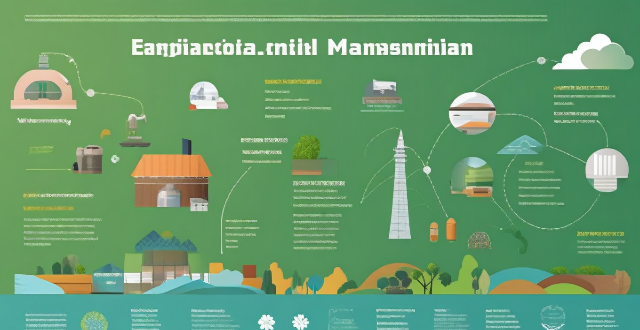Climate adaptation is crucial for maintaining agricultural productivity and sustainability amidst shifting environmental conditions. It impacts agricultural practices in several ways, including changes in planting schedules, use of drought-resistant crops, water management techniques, soil health management, livestock management, pest and disease management, diversification of crops and income streams, adoption of smart technologies, and policy and infrastructure support. By embracing these changes, farmers can continue to produce food while minimizing the environmental impact of their operations and building resilience against future climate challenges.

Climate Adaptation and Its Impact on Agricultural Practices
Climate adaptation refers to the adjustments in human behavior and practices in response to anticipated climate changes. In the context of agriculture, these adjustments are crucial for maintaining productivity and sustainability amidst shifting environmental conditions. Here's a detailed look at how climate adaptation impacts agricultural practices:
1. Changes in Planting Schedules
- Earlier Planting: Farmers may choose to plant crops earlier to avoid the negative effects of increased temperatures and unpredictable rainfall patterns.
- Multiple Cropping: In regions where temperature increases enable longer growing seasons, farmers might adopt multiple cropping cycles within a single year.
2. Use of Drought-Resistant Crops
- Genetic Varieties: The development and use of drought-resistant crop varieties become essential as water availability becomes more uncertain.
- Seed Selection: Farmers might opt for seeds that are adapted to local conditions and can thrive with minimal water inputs.
3. Water Management Techniques
- Irrigation Efficiency: Improving irrigation efficiency through drip or sprinkler systems helps conserve water and ensure crops receive adequate moisture.
- Rainwater Harvesting: Collecting and storing rainwater for later use can mitigate the risks associated with irregular rainfall patterns.
4. Soil Health Management
- Organic Matter: Enhancing soil organic matter content improves soil structure and water retention capacity, making it resilient against extreme weather events.
- Cover Crops: Using cover crops can prevent soil erosion, maintain soil moisture, and suppress weed growth.
5. Livestock Management
- Heat Tolerance: Breeding livestock with higher heat tolerance can reduce the negative impacts of increased temperatures on animal health and productivity.
- Feeding Strategies: Adjusting feeding strategies based on seasonal changes ensures that animals receive proper nutrition despite fluctuating pasture quality.
6. Pest and Disease Management
- Integrated Pest Management (IPM): As changing climates can introduce new pests and diseases, implementing IPM practices helps control them without overreliance on chemical pesticides.
- Crop Rotation: Rotating crops can disrupt the life cycles of pests and reduce the buildup of pathogens in the soil.
7. Diversification of Crops and Income Streams
- Agroforestry: Combining trees with crops not only provides diverse products but also enhances ecosystem services like carbon sequestration and microclimate regulation.
- Value-Added Products: Farmers might explore value-added products such as jams, preserves, or artisanal cheeses to generate additional income streams.
8. Adoption of Smart Technologies
- Precision Agriculture: Using technologies like GPS mapping, soil sensors, and weather forecasting tools allows farmers to make data-driven decisions about planting, fertilizing, and harvesting.
- Digital Platforms: Online platforms for sharing knowledge, market information, and weather alerts help farmers adapt more effectively to changing conditions.
9. Policy and Infrastructure Support
- Extension Services: Governments and NGOs play a vital role in providing extension services that educate farmers about climate-smart agricultural practices.
- Infrastructure Development: Investments in infrastructure such as irrigation systems, storage facilities, and transport networks support climate adaptation efforts by reducing losses and improving market access.
In conclusion, climate adaptation has far-reaching implications for agricultural practices. By embracing these changes, farmers can continue to produce food while minimizing the environmental impact of their operations and building resilience against future climate challenges.